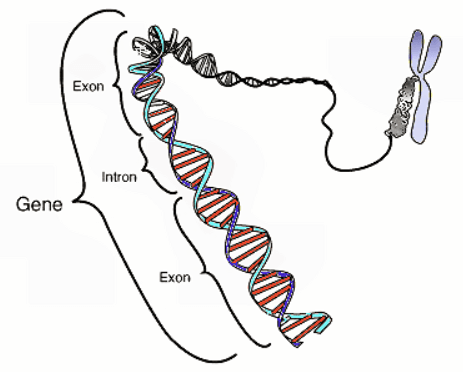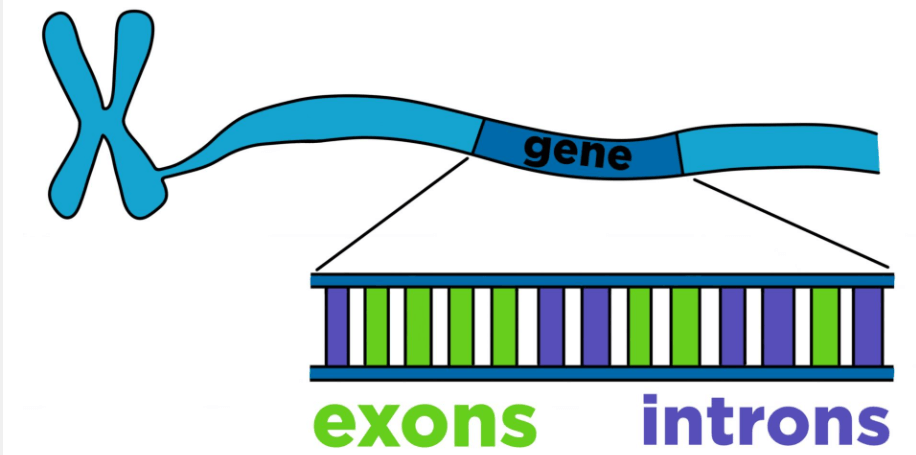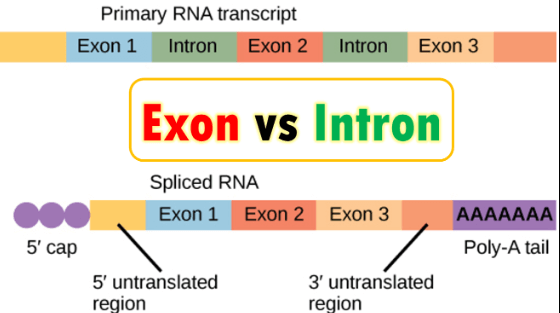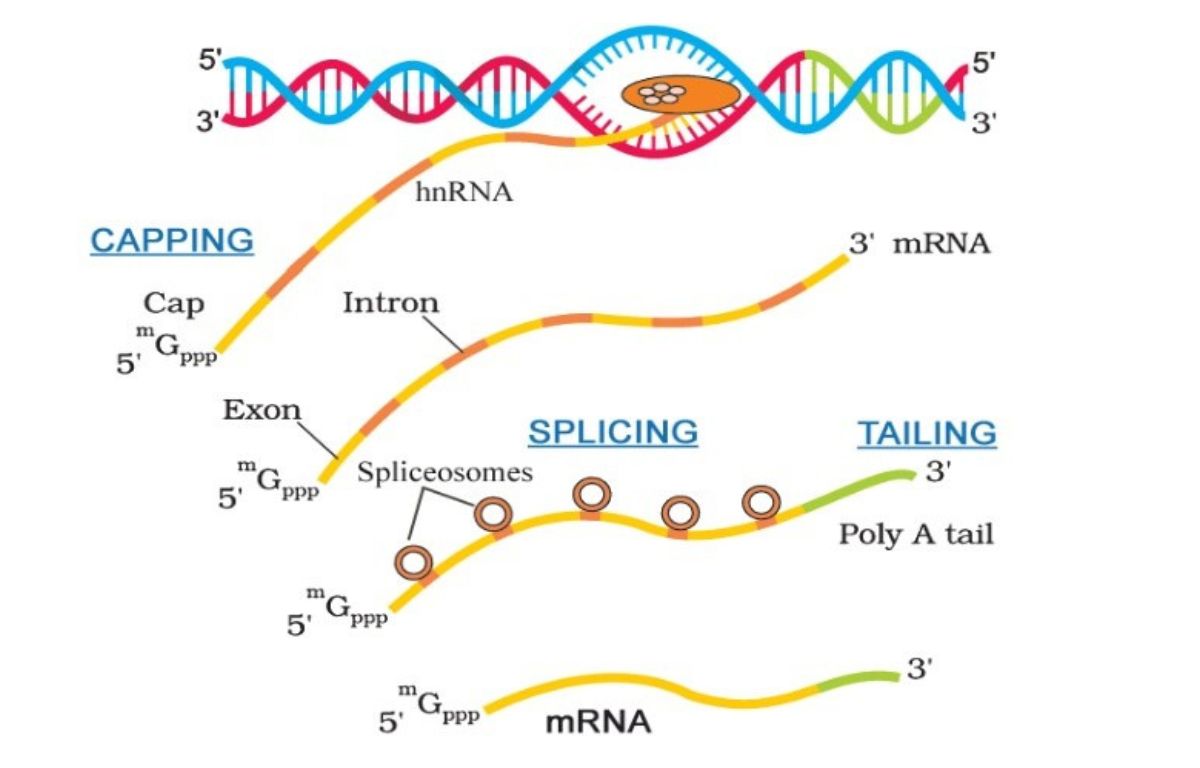Table of Contents
What are Exons?
Exons are the parts of a gene in our DNA that contain instructions for making proteins, which are essential for our bodies to function. Genes are like long strings of information, and exons are the specific parts that carry useful information for building proteins. They work alongside introns, which are parts of the gene that don’t carry these instructions.

When a gene is copied into RNA [a messenger that helps turn DNA into proteins], only the exons are kept, while the introns are removed. These exons are then pieced together to form a complete message that helps make proteins in our cells. So, exons are the parts of a gene that directly help build the proteins we need.
Define Introns
Introns on the other hand are non-coding sections within a gene, meaning they do not directly contribute to making proteins. When a gene is copied into RNA, it includes both the coding and non-coding parts. Before the RNA can be used to make a protein, introns are removed through a process called splicing.

Although they do not directly code for proteins, introns play important roles in the Cell. They help regulate gene activity, allow for different proteins to be produced from a single gene, and contribute to genetic diversity and evolution. In this way, introns are essential for controlling gene expression and aiding the complexity of genetic information.
Difference Between Exons and Introns
The main difference between exons and introns is that exons are part of a gene that codes for proteins, meaning they are essential for making specific proteins in our body. Introns, on the other hand, do not code for proteins and are removed from the gene sequence before protein synthesis. Other common differences between exons and introns have been tabulated below.

| Difference Between Exons and Introns | ||
| Features | Exons | Introns |
| Definition | Exons are coding sequences in a gene. | Introns are non-coding sequences in a gene. |
| Function | Code for proteins. | Usually have regulatory or unknown functions. |
| Location | Found in both prokaryotic and eukaryotic genes. | Primarily found in eukaryotic genes. |
| Presence of mRNA | Retained in mature mRNA. | Removed during RNA splicing. |
| Sequence Length | Generally shorter. | Typically longer than exons. |
| Role in Evolution | Less variable; conserved across species. | More variables; can contribute to Evolution. |
| Expression | Directly expressed in the final protein. | Not directly expressed, removed in processing. |
| Stability | More stable within the RNA sequence. | Less stable; prone to splicing errors. |
| Conservation | Highly conserved in different organisms. | Less conserved compared to exons. |
| Post-transcriptional Modification | Not modified after splicing. | Removed through RNA Splicing. |
Functions of Exons and Introns
Exons and introns are segments of DNA within a gene, but they serve very different roles in gene expression:
Exons
- Coding Regions: Exons are the parts of a gene that contain the code for producing proteins. When a gene is transcribed, exons are the sequences that remain in the final messenger RNA [mRNA] after processing.
- Protein Synthesis: Exons determine the specific amino acid sequence of a protein, meaning they directly impact the protein’s structure and function.
- Alternative Splicing: Exons can be arranged in various ways through a process called alternative splicing. This allows one gene to produce multiple proteins with diverse functions, depending on which exons are included in the final mRNA.
Introns
- Non-Coding Regions: Introns are sequences within a gene that are transcribed but not translated into protein. They are removed from the mRNA during processing and are not part of the final mRNA molecule.
- Gene Regulation: Introns often contain regulatory sequences that help control when, where, and how much a gene is expressed. They play a role in timing and tissue-specific expression.
- Alternative Splicing Support: Introns make it possible for alternative splicing to occur, increasing protein diversity from a single gene.
- Evolutionary Role: Introns may facilitate gene evolution by allowing for recombination events without disrupting coding sequences, potentially leading to new gene functions.





 50 Vegetables Name for Kids in English a...
50 Vegetables Name for Kids in English a...
 Body Parts Name, All 50 Body Parts Name ...
Body Parts Name, All 50 Body Parts Name ...
 Flowers Names in English and Hindi, List...
Flowers Names in English and Hindi, List...









